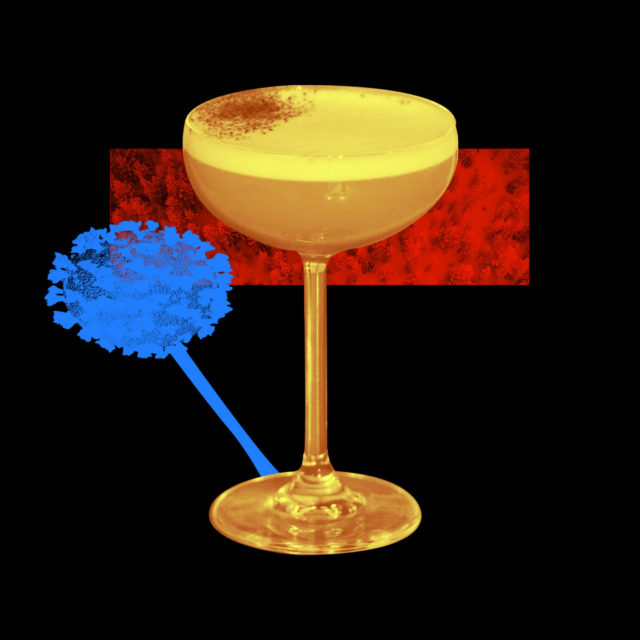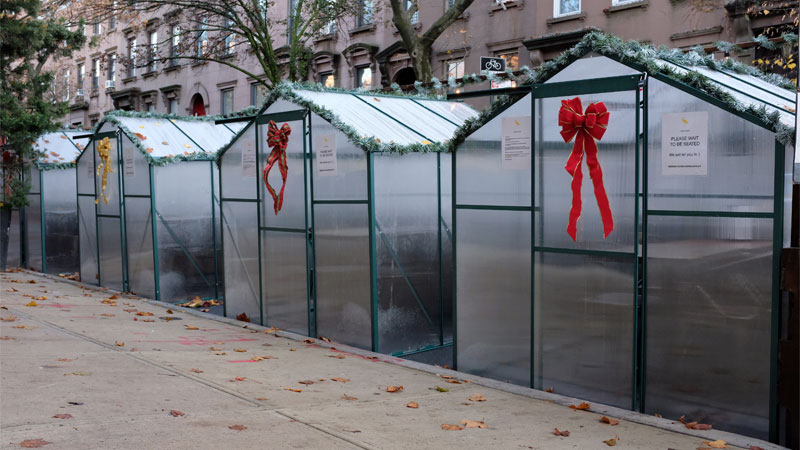In December 2020, America’s bar and restaurant industry shed 372,000 jobs — more than any other sector.
The plight of hospitality businesses may have slipped many of our minds in recent months amid political turmoil, a holiday break like no other, and the sheer monotony of life in an ongoing pandemic. Yet, the significance of more than 1 percent of the population losing their jobs in one month, from within just one employment sector, should be lost on no one.
That figure will have hardly surprised bar and restaurant owners after spending the best part of one year on life support. But as their industry enters its slowest annual turn, the by now familiar tale of adaptation, diversification, and doing whatever it takes to make ends meet gains more importance. And as the stakes increase the challenges only grow.
New York’s short-lived affair with 25 percent indoor dining ended on Dec. 11, less than three months after bars and restaurants welcomed their first guests back to dining rooms. Even if operating a profitable business, or simply breaking even, was never a reality at limited capacity, the news could hardly have come at a worse time, with temperatures plunging and winter setting in.
And so the focus again shifted to outdoor spaces. Solutions ranged from electric and propane heating systems to fully enclosed indoor/outdoor spaces and elaborate igloo-type structures. For some, the irony of the situation has left a bitter taste.
“I’ve watched people construct solid rooms on the street — enclosed four walls with heaters in them and doors,” says Toby Cecchini, co-owner of New York’s Long Island Bar and Restaurant. “There’s no difference between that and [indoor dining].”
With his bar located on the corner of a busy Brooklyn avenue with a bus lane and a small side street with a bike lane, Cecchini has not been able to build a structure on the street. Instead his bar relies on the reduced capacity of sidewalk seating.
Cecchini says he bears no resentment toward neighbors who have been able to take advantage of street spaces responsibly, but he is riled by the hypocrisy of shutting down indoor dining while businesses like nail salons and gyms remain open. “It makes you hold your head and howl,” he says. “We’re dying on the vine.”
On a recent Thursday evening, Long Island Bar’s takings grossed $422 from 14 guests. After paying $385 to staff, the bar was left with less than $40 to cover rent, taxes, and insurance. “There’s no question of profit for anyone in this business right now,” Cechhini says. ”It’s just, how long can you hold [on] and not lose your shop?”
Zach Mack, owner of ABC Beer Co. in Manhattan’s Alphabet City neighborhood, is similarly perturbed by the “ice fishing hut” structures popping up in front of the city’s bars and restaurants. Unlike Cecchini, he has been able to construct a street seating area, but the process has been fraught with complications.
After paying a carpenter to build a solid seating area that would last the season and comply with city guidance, Mack was told to change his structure on three separate occasions. When city officials finally gave the green light to open, he looked to invest in heating for the area. But the options were limited: Propane heaters were not in the cards as the city only allows them to be used on sidewalks and not on the street. By this point electrical heaters were backordered for weeks on supplier websites. Finally, just before Christmas, he installed two units.
Despite fixing them with a special type of screw, one of the units was stolen within two and a half weeks. The theft of the heaters has been a common problem for bar and restaurant owners battling cold conditions across the country. Mack was hardly shocked by the parting gift from 2020. “Honestly, I’m surprised it lasted as long as it did,” he says.
Besides outdoor dining, cocktails-to-go have been one of the only other “lifelines” available to bars and restaurants during the pandemic. But where the streets of major metropolises once thronged with revelers sipping Margaritas from cold-brew cups, now there is only cold.
Even in the height of summer, the spoils of relaxed drinking laws were not enjoyed by all. Particularly outside of major cities.
“Cocktails to-go are a joke,” says John Clark-Ginnetti, owner of 116 Crown in New Haven, Conn. “In this existential crisis that we’re experiencing, anybody that has the wherewithal to be a discriminating drinker is probably not in a municipality.”
An outpost for creative cocktails in the “Cultural Capital of Connecticut,” Clark-Ginnetti built his business for university professors, nearby office workers, and the odd discerning Yale student. Most left the city at the beginning of the pandemic and have yet to return.
Unlike New York, Connecticut is still allowing indoor dining at 25 percent capacity. 116 Crown also offers sheltered outdoor seating pods for parties that prefer not to be indoors. They’re not a Covid-related innovation and Clark-Ginnetti says this time last year he couldn’t keep up with reservations for them. But business this January is barely a quarter of 12 months ago.
“If you can find a restaurant or bar that is making money right now, tell them to give me a call,” he says, echoing Cecchini’s words. “There’s no way to make money — not on our model.”
It’s a similar tale in Chicago where, just like New York, indoor dining is not an option right now. “We are barely hanging on,” says Julia Momose, partner and creative director at Kumiko.
Momose spent the early months of the pandemic campaigning for cocktails to-go through her foundation Cocktails For Hope. City council members finally signed off on the measure in June, months after cities like New York and San Francisco gave the green light.
So have to-go cocktails offered any hope?
Momose says yes, but only coupled with outdoor dining, takeout food, and the ability to act as a retailer of rare bottles of whiskey. Momose has also struck partnerships with brands, which have provided profits for the business as well as charities, and she offers curated cocktail classes based on topics like shaken versus stirring and the many different drinks that can be made from one style of spirit.
“Reminding people that we’re still here is such a big part of this,” she says.
With the current unemployment levels in the hospitality industry, and the challenges faced by independent bar and restaurant owners, most of us really shouldn’t have to be reminded.
This story is a part of VP Pro, our free platform and newsletter for drinks industry professionals, covering wine, beer, liquor, and beyond. Sign up for VP Pro now!

